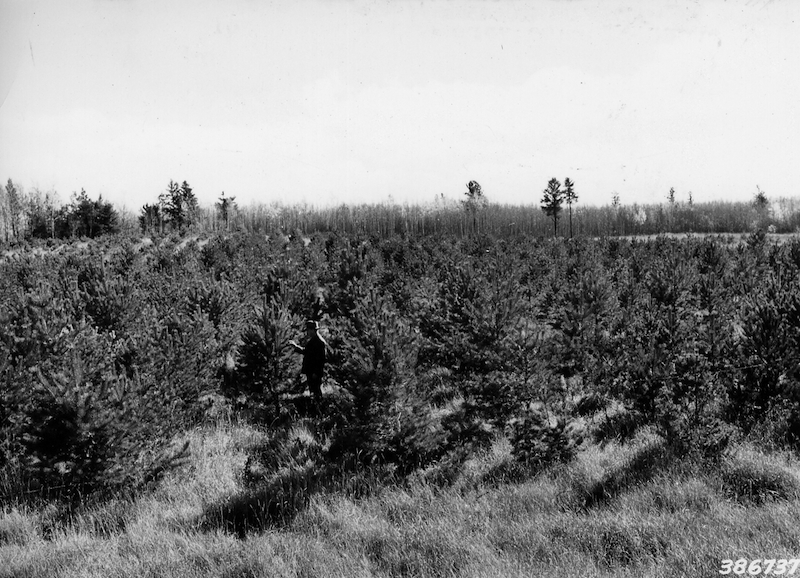Scotch Pine : Uses
The Scotch pine can be used to treat skin diseases, dress wounds, and as an antibiotic. The resin from the pine can be with other substances (such as pig fat and beeswax) to treat the skin, while the buds can be boiled to produce a substance high in Vitamin C which can prevent scurvy. The resin can also be used to produce turpentine, the inner bark for rope, the roots for tar, and the cones for kindling. The bark of the tree is also edible, and has been utilized for food by groups such as the Sami (which will be detailed later). In England, Scotch pines were also used on farms as windbreaks.
The timber is relatively popular for naval uses (particularly in Great Britain), and once treated can be used for a variety of outdoor structures. The quality and quantity of the timber is greatly influenced by the seed source. The Scotch pines from central Europe grow markedly more quickly than their US counterparts and produce 15 times as much wood as the slow-growers. The pine is exceptionally strong for a softwood, and so is useful for items such as telephone poles and fencing. In the United States, it has been used mainly as a Christmas tree or to control soil erosion. It makes up about 30 percent of all the Christmas trees harvested in America annually.

